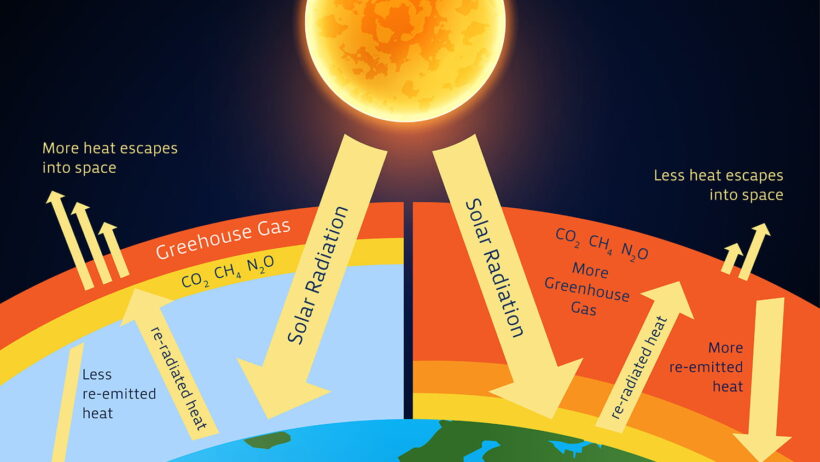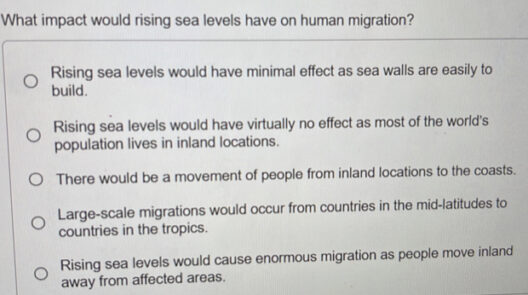The Greenhouse Effect is a pivotal phenomenon within Earth’s climate system, functioning as a natural mechanism that helps to regulate the planet’s temperature. Although it is essential for sustaining life, an excess of greenhouse gases in the atmosphere can lead to dire consequences. This article delves into the intricacies of the Greenhouse Effect, exploring its mechanism, implications, and ongoing challenges in the context of climate change.
Understanding the Greenhouse Effect
The Greenhouse Effect arises when certain gases in Earth’s atmosphere trap heat from the sun. These gases, often referred to as greenhouse gases (GHGs), include carbon dioxide (CO2), methane (CH4), nitrous oxide (N2O), and water vapor. When solar energy reaches Earth, some of it is absorbed, warming the surface. The planet then emits this energy in the form of infrared radiation. However, GHGs absorb and re-radiate a portion of this infrared radiation back to the Earth’s surface, consequently maintaining a temperature conducive to life.
This natural process is akin to a blanket that retains warmth, shielding Earth from the extreme temperatures of outer space. Without the Greenhouse Effect, our planet would be inhospitable, with average temperatures plummeting to around -18 degrees Celsius (0 degrees Fahrenheit). Instead, the average global temperature hovers around 15 degrees Celsius (59 degrees Fahrenheit), a remarkably conducive setting that supports diverse ecosystems.
Key Greenhouse Gases: Their Sources and Effects
Carbon Dioxide (CO2) is the most consequential GHG, primarily produced through the burning of fossil fuels, deforestation, and certain industrial processes. Its concentration in the atmosphere has surged since the Industrial Revolution, leading to increased radiative forcing—an essential term in climate science that represents the change in energy balance due to additional greenhouse gases.
Methane (CH4), while existing in smaller quantities, is significantly more effective at trapping heat—over 25 times more potent than CO2 over a 100-year period. This potent gas is released during the production and transport of coal, oil, and natural gas, as well as through livestock digestion and landfills.
Nitrous Oxide (N2O) is another critical GHG, primarily generated from agricultural practices, including the use of synthetic fertilizers. Its warming potential is around 298 times that of CO2 over a century. Water vapor, although the most abundant greenhouse gas, acts as a feedback mechanism rather than a direct contributor, amplifying the effects of other GHGs.
The Implications of Excess Greenhouse Gases
The infusion of excess GHGs into the atmosphere has led to an observable increase in global temperatures, commonly referred to as global warming. The Earth’s average temperature has risen by approximately 1.2 degrees Celsius (2.2 degrees Fahrenheit) since the late 19th century, with ensuing implications for both natural ecosystems and human societies.
One immediate consequence of this warming is the escalated frequency and intensity of extreme weather events. Heatwaves, droughts, and heavy rainfall have all heightened, exacerbating the challenges faced by agricultural systems worldwide. This volatility not only threatens food security but also has profound implications for water scarcity, further intensifying competition for this vital resource.
Moreover, as temperatures rise, polar ice caps and glaciers are melting at unprecedented rates, contributing to rising sea levels. The Intergovernmental Panel on Climate Change (IPCC) predicts that sea levels could rise by as much as a meter by the end of the century if current trajectories continue. Coastal cities and ecosystems face existential threats, necessitating urgent adaptation and mitigation strategies.
Human Health Risks Associated with Climate Change
The public health ramifications of climate change are profound and multifaceted. Increasing temperatures can elevate the incidence of heat-related illnesses and exacerbate respiratory conditions due to poorer air quality influenced by heightened pollutants and allergens. Moreover, shifting patterns of infectious disease transmission are becoming apparent as vectors like mosquitoes expand their ranges into previously uninhabitable areas.
Vulnerable populations, including the elderly and low-income communities, are disproportionately affected, exacerbating social inequities. As resources become strained and the environment becomes less hospitable, addressing health disparities must go hand in hand with strategies to combat climate change.
Mitigation Strategies: A Path Forward
To navigate the complexities of climate change, concerted global action is imperative. Strategies such as transitioning to renewable energy sources—solar, wind, and hydropower—are vital for curtailing GHG emissions. This involves not only technological advancements but also a cultural shift towards sustainable practices within industries and communities.
Reforestation and afforestation initiatives play a crucial role in counteracting CO2 emissions, as trees act as carbon sinks, absorbing atmospheric carbon through photosynthesis. Moreover, sustainable agricultural practices that minimize the use of synthetic fertilizers can significantly reduce N2O emissions.
Finally, public awareness and policy implementation are critical components of effective climate action. Engaging communities in sustainability efforts, investing in education, and advocating for sound environmental policies can foster a more informed and proactive populace towards mitigating the Greenhouse Effect.
In conclusion, while the Greenhouse Effect is a natural process essential for maintaining Earth’s climate, the unrelenting rise in greenhouse gas concentrations demands immediate attention. Engaging in proactive solutions will not only alleviate the impacts of climate change but also ensure a healthier planet for generations to come. The responsibility lies with all of us to advocate for policies, practices, and innovations that promote environmental stewardship and safeguard our climate system.







